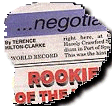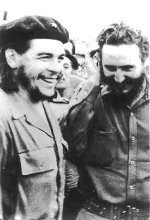

Historical Background of Cuba before Castro
By Terence Hilton-Clarke
©Copyright 1996
part 2
Thus, it was sugar that was to have a continual grip on Cuban economic fortunes
(see Table 1).
Another major economic factor at this time was the Reciprocity Treaty of 1903 in which Cuba received lower tariff duties for certain exports in exchange for lowering duties on select U.S. imports. Not surprisingly, the Cuban market became engulfed in the produce of its much larger trading partner, thus hurting the Cuban enterprise and detracting the few local capital holders who became reluctant to invest in a market saturated by the U.S. goods. At the same time, preferential access to the U.S. Market for Cuban agricultural exports led to an increasing dependence on sugar ( a pattern that, to this day, the Castro regime has been unable to break) and an increase in foreign, particularly American, control over this industry.
Table 1) : Distribution of U.S. Capital in Cuba ( 1911 )
Sector Total investment (in millions) Sugar $ 50 Other land $ 15 Agriculture $ 10 Railway $ 25 Mines, Mercantile and Manufacture $ 25 Shipping $ 5 Banking $ 5 Mortgages and Credits $ 20 Public utilities $ 20 Public Debt $ 30 The prospect for stability soon deteriorated as Cuba became haunted by a revolutionary history typical of Latin American countries. Perez explains: " Armed rebellion to protest reelection gave powerful expression to the urgency of politics in the republic. There was much at stake in these proceedings. Politics was serious business, at least serious enough to go to war for. If political means failed to dislodge incumbent authorities according to prescribed electoral methods, the nature of the stakes required the opposition to resort to military methods to restore parity of access to the distributive mechanisms of state". Such uprisings prompted the U.S. to invoke the Platt Amendment in order to carry out its inherent right of interference in Cuban affairs. When the election bid of the first Cuban President, Tomás Estrada Palma, provoked his opponents into taking up arms in August 1906, U.S. Marines were called in, and they occupied the island for three years. Other rebellions and subsequent occupations were to take place in 1912 and again in 1917.
At the beginning of the 1930's, the U.S. ceased its regional policy of military invention in favour of spreading its economic influence through the more subtle Good Neighbor Policy (1933). In this spirit, the Platt Amendment was rescinded in 1934. Unfortunately, political instability continued to be en vogue. In 1933, President Gerardo Machado was overthrown by Army Sergeant Fulgencio Batista. For the rest of the decade he ruled through a series of "puppet presidents and shadow governments: José A. Barnet ( 1935-36 ), Miguel Mariano Gomez (1936) and Federico Bru (1936 - 40)" (Perez), before being elected himself for four years, during which he changed the constitution. He was succeeded by Ramón Grau San Martin ( 1944-48) and Carlos Prío Socarrás( 1948-52 ). During these two decades, Batista was able to "restore some semblance of public order with the 1940 Constitution providing for free elections, universal suffrage, maximum hours and minimum wages, pensions, workers' compensation and the right to strike"(Perez).
During the 1930's, there was an improvement in economic conditions: Cuban participation in the U.S. market grew from 25.4% ( 1933 ) to 31.4% ( 1937). Meanwhile, Cuban sugar output increased from 1.9 million tons to 2.9 million tons between 1933 and 1938 with the corresponding value rising from $ 53.7 million to $ 120.2 million during the same period. However, the social situation was in a much darker shade. By the 1940's administration was tainted by graft and corruption while gangsterism and political assassinations were also very much in evidence. In 1952, Batista seized power again on the eve of the elections in which he had been one of the candidates. Again, he sought to restore law and order while also winning support from the bourgeois and the organized labour unions. At the same time though, he suspended the 1940 Constitution, dissolved all political parties and gave special privileges to members of the armed forces. Such activities resulted in a growing list of problems for the dictator. These were, mainly, a growing political opposition (which led to a harsh crackdown) along with an increase in nationalism and anti-American sentiment. These latter two schools had developed as reactions to certain factors that had become apparent in Cuban society during the decade of the 1950's. U.S. economic dominance led to an increase in the value of American products from $ 515 million in 1950 to $ 649 million ( 1956 ) to $ 777 million in 1958. By this time, U.S. investments had reached $ 1.001 million (1 billion). Much to the dismay of the nationalists, Cuban society was becoming Americanized with a marked preference for American products (e.g. food and clothing ), particularly among the upper classes. In addition, the "importance of sugar, and the influx of U.S. capital meant that there was no land-bound class of serfs, but rather an 'American-owned, agro-industrial unit' "( Ruiz). Cuban society was also becoming typical of many Latin American countries with large social divisions between the upper and lower classes, leading to an atmosphere of tension. Because of his anti-Communist stance, Batista continued to receive economic and military support from the United States, and this caused an increase in anti-American feeling and general opposition. Among those who found themselves opposed to the Batista regime during the decade was a young university graduate named Fidel Castro Ruz. A native of Oriente province, the 27 year old had already been an activist for about 5 years when, in 1953, he led an attack on the Moncada army barracks. It proved to be an unsuccessful venture, and the young Castro was captured, imprisoned and later pardoned by the President. These events did not dim his revolutionary fervour and, in 1956, he and some other members of what became to be known as the 26th of July movement left Mexico, where they had been in exile, aboard a boat named the Granma.
However, their return to Cuba on December 2, was anticipated. The revolutionaries walked into an ambush when they landed at Playa Colorada. Most of the men were captured, but a band of about thirty, including Fidel Castro, his brother Raul and an Argentine mercenary, Ernesto "Che" Guevara, escaped into the Sierra Maestre mountains.
From this hiding spot, the rebels were able to elude Batista's forces. Meanwhile, they received gracious aid from people in the mountain villages while they began recruiting additional members to their ranks.
With a force of approximately 800 Castro began a fresh assault on Havana. His organized units were able to defeat the national army and Batista, apparently sensing the end was near, fled Cuba on January 1 1959, allowing Castro and his revolutionaries to assume control.
-
Cuba History- part 1
- go back up
|
Historical
Background of Cuba before Castro Historical
Background of Cuba before Castro
|
|
Related links: José
Martí |
|





